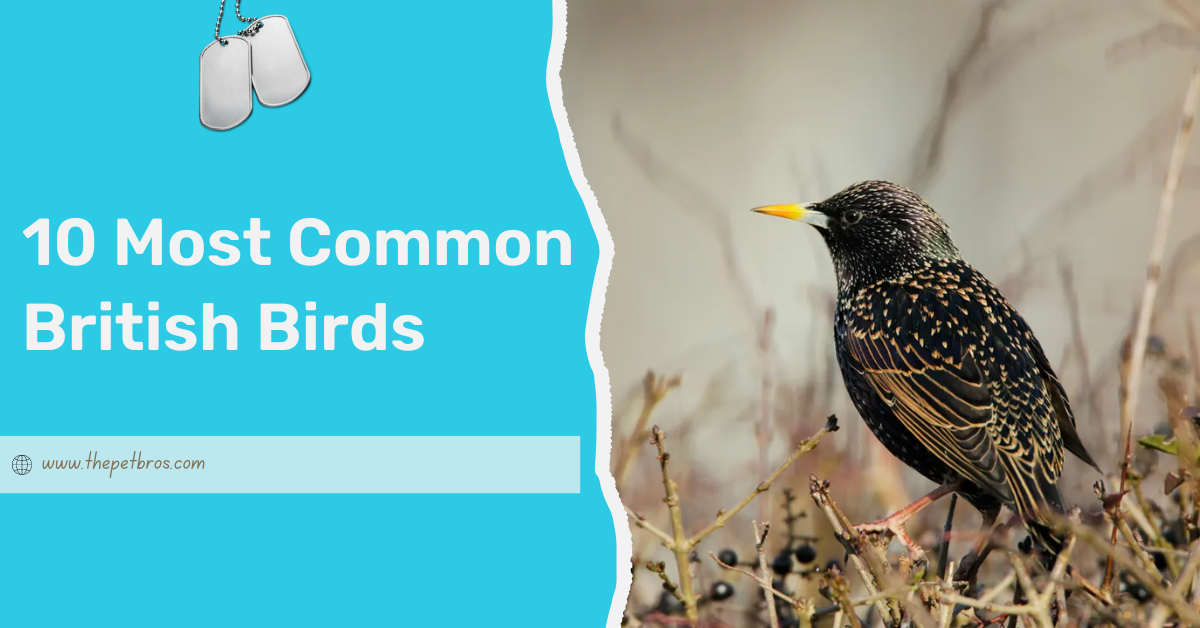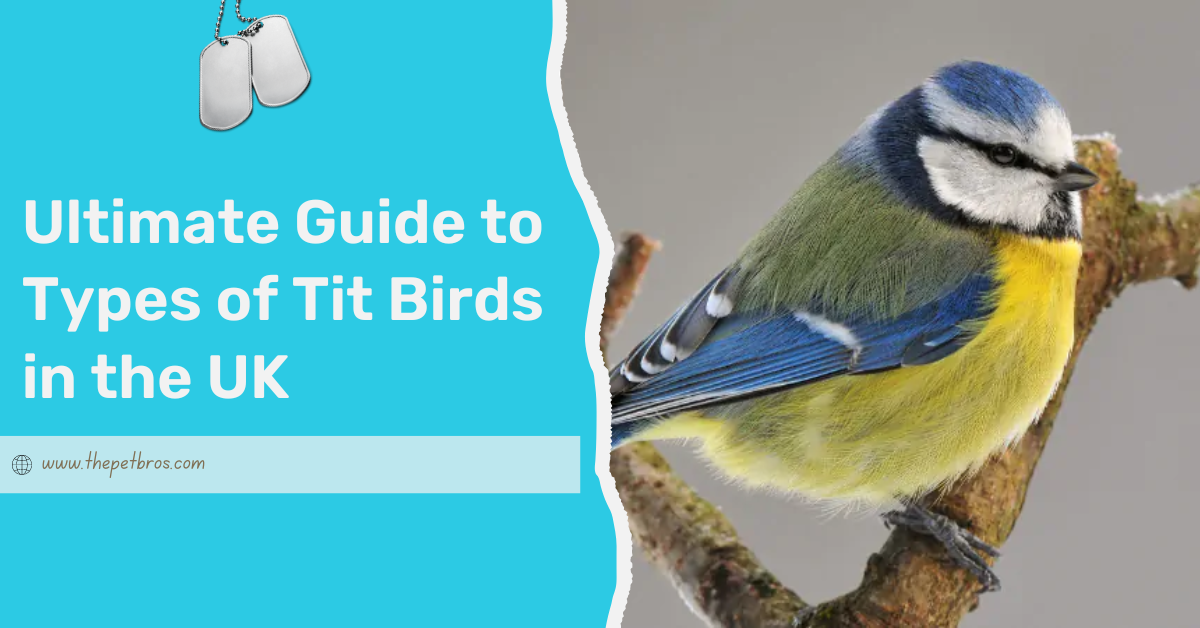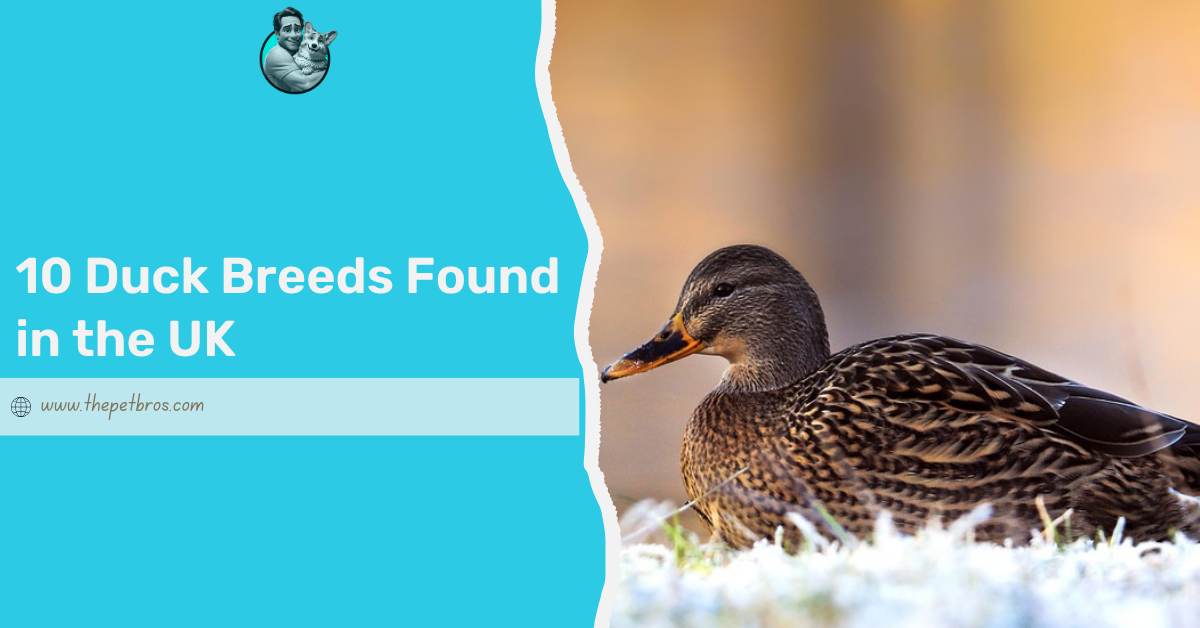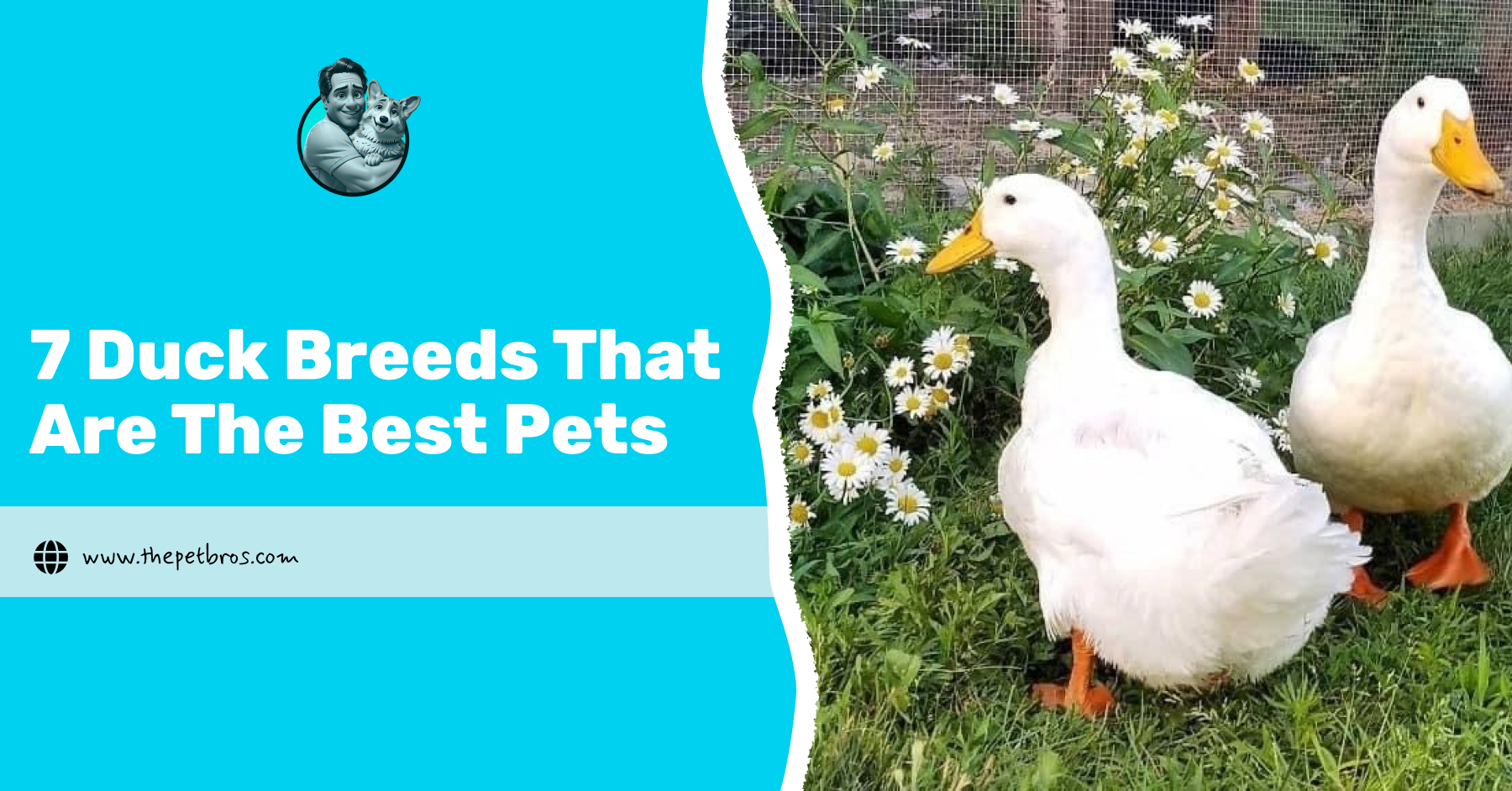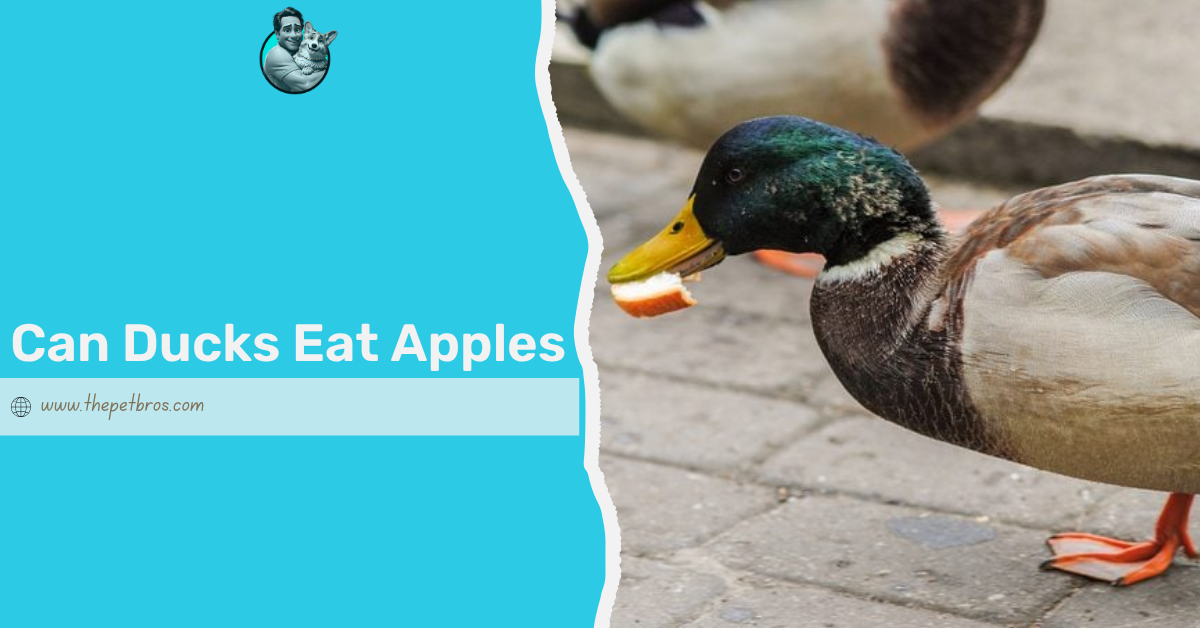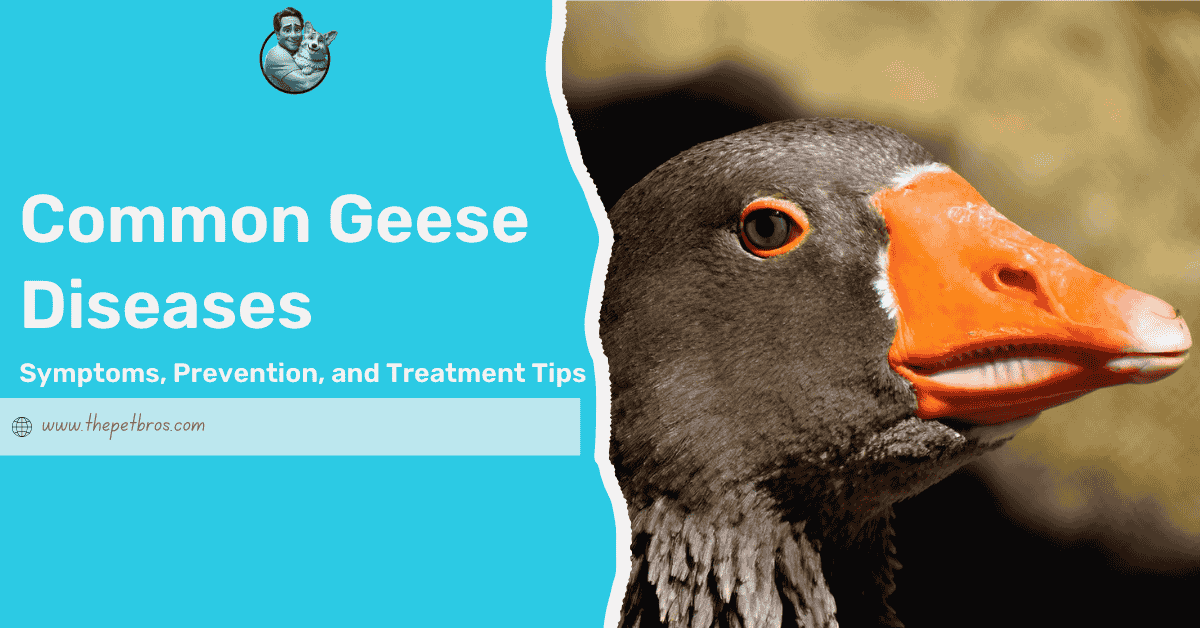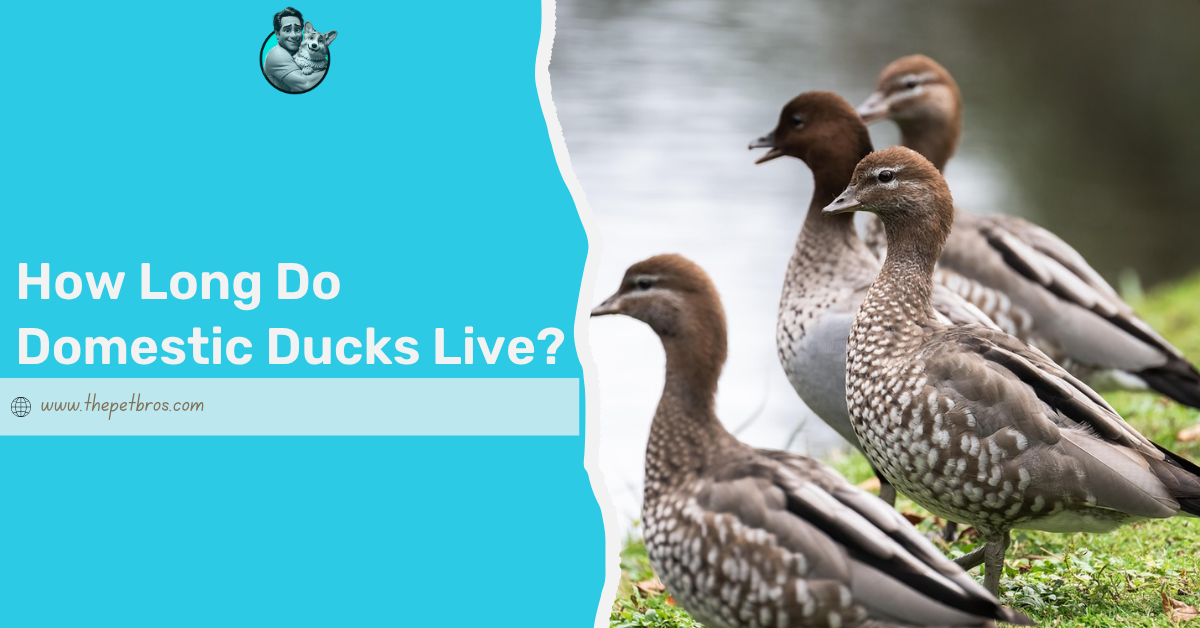You know that feeling when you’re out for a morning stroll, and you hear that familiar chatter or see a quick flash of wings? There’s something so comforting about it, isn’t there? However, if you’ve ever found yourself wondering, “I see that one all the time, and I wonder what it’s called?” you’re certainly not alone! Many of us share our everyday moments with these feathered friends without knowing much about them.
And there’s a lot to discover! Getting to know the most common British birds isn’t just a bit of fun; it can make your everyday encounters with nature even more special. So, shall we take a closer look at some of the lovely and most common birds in the UK?
Top 10 Most Common British Birds You’re Likely to See
1. Wren (Troglodytes Troglodytes)
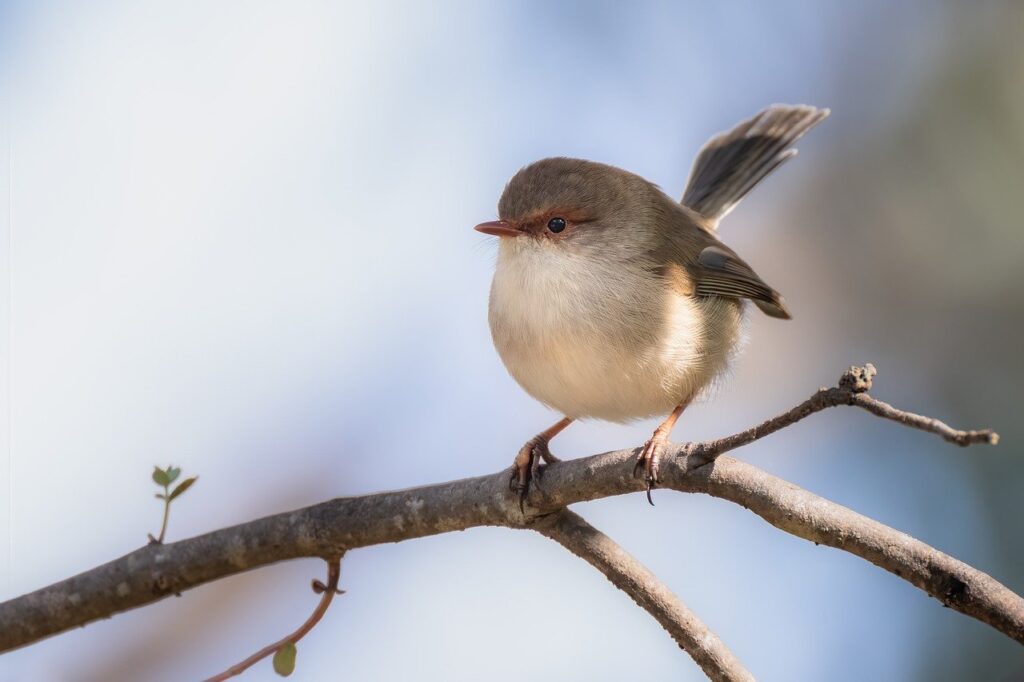
Wrens are currently the most common British birds, according to the British Trust for Ornithology. They are tiny, round-bodied birds with a distinctive, upturned tail and rich brown plumage with fine dark brown streaks.
Despite their small size, although they aren’t the smallest bird in the UK, Wrens have a surprisingly loud, trilling song that is often heard in gardens, woodlands, and hedgerows. They are secretive and like to stay hidden in dense vegetation, but their energetic movements and constant flicking tails can help you spot them relatively easily.
Wrens feed on insects and spiders and often build their nests in sheltered spots, like dense bushes or garden sheds, using moss and leaves.
- Appearance: Small, brown, with a distinctive upright tail.
- Scientific Name: Troglodytes troglodytes
- Song/Call: Loud, trilling song; surprisingly powerful for their size.
- Personality/Behaviour: Energetic, secretive, and often hidden.
- Diet: Insects, spiders.
- Nesting Habits: Nests in dense shrubs, bushes, or garden sheds.
- Where to Spot Them: Common in gardens, woodlands, and hedgerows.
2. House Sparrow (Passer Domesticus)
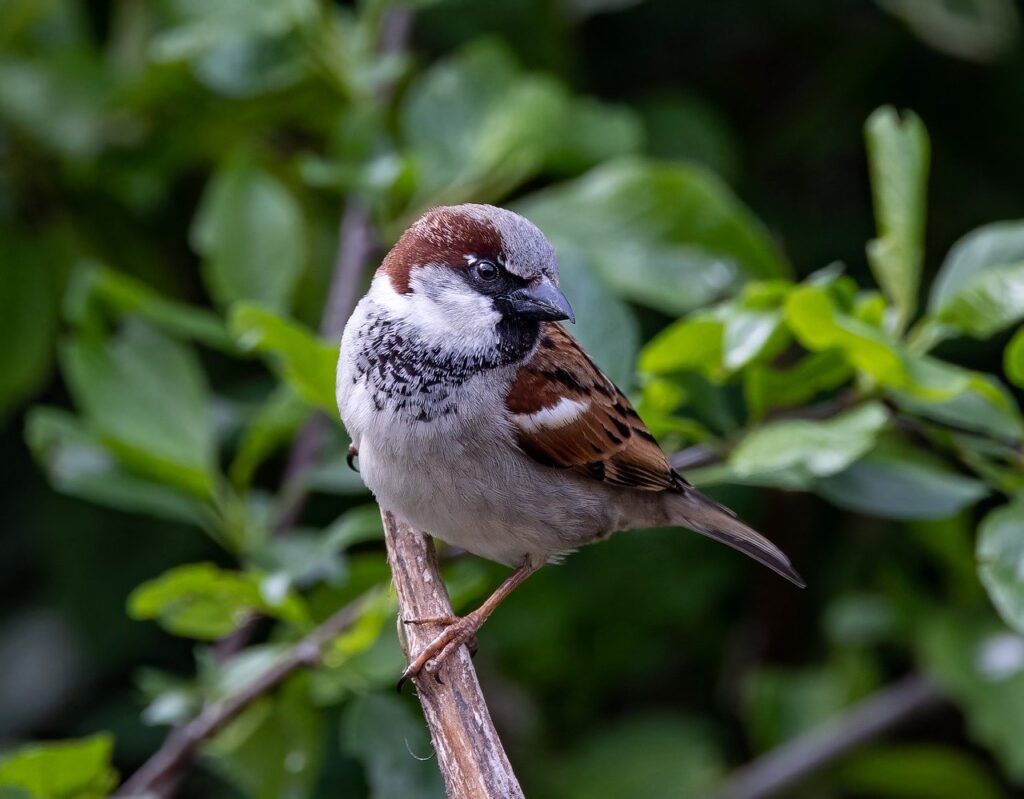
The House Sparrow is another small but chunky bird in the UK. Males are easy to identify with their grey heads, chestnut-brown necks, and distinctive black bibs, while females sport softer brown tones with a pale stripe above the eye.
They are bold and social birds, often seen hopping around in search of food or chirping away in groups. House Sparrows adapt well to human environments, frequently nesting under eaves, in walls, or thick hedges, using whatever materials they can find.
However, sadly, despite their familiar presence, House Sparrows have faced a decline over the years. And if this trend continues, we might not find them around anymore.
- Appearance: Males: grey crown, black bib, chestnut necks; Females: light brown with a pale eye stripe.
- Scientific Name: Passer domesticus
- Song/Call: Series of loud, repetitive chirps.
- Personality/Behaviour: Bold, noisy, and social; often in flocks.
- Diet: Seeds, grains, insects, and scraps.
- Nesting Habits: Nests under eaves, in hedges, or in wall cavities.
- Where to Spot Them: Common in gardens, parks, and towns.
3. Blue Tit (Cyanistes Caeruleus)
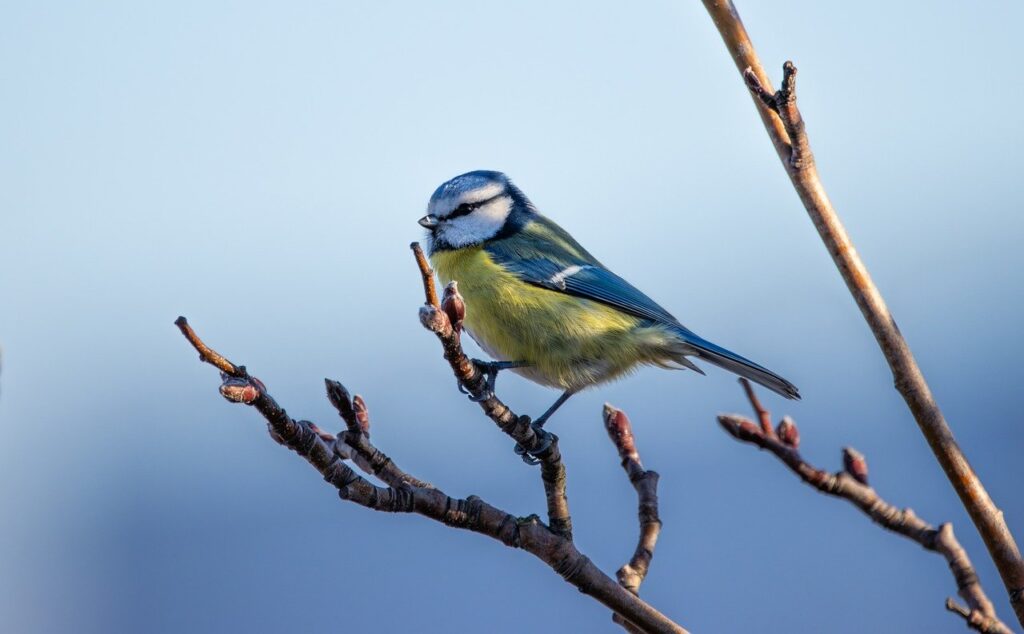
The Blue Tit is a small, colourful bird with a bright blue cap, white face, and yellow underparts. Known for their acrobatic feeding habits, they are often seen hanging upside down from branches or bird feeders.
Their call is a series of high-pitched notes, and they are usually found in gardens, woodlands, and hedgerows. Blue Tits love a good meal of insects and caterpillars, and you might even spot them competing for the best spots with other types of tit birds during nesting season.
- Appearance: Bright blue cap, white cheeks, yellow belly.
- Scientific Name: Cyanistes caeruleus
- Song/Call: Sharp, high-pitched notes.
- Personality/Behavior: Active and curious; often seen at feeders.
- Diet: Insects, seeds, nuts.
- Nesting Habits: Prefers holes in trees or bird boxes.
- Where to Spot Them: Frequently found in woodlands, gardens, and parks.
4. Common Blackbird (Turdus merula)
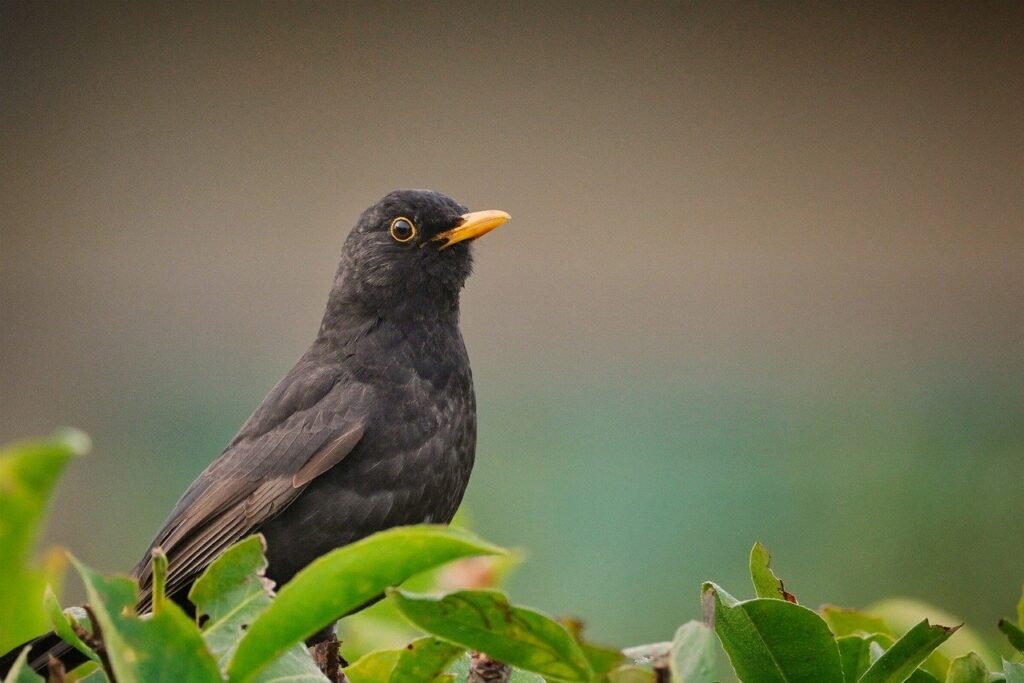
A list of the most common British birds is undoubtedly incomplete without the Common Blackbird. Recognised by their deep, flute-like song, Blackbirds are often seen foraging on the ground or perched in trees. Males are jet black with bright yellow beaks, while females are brown with speckles.
These birds are ground feeders, commonly seen turning over leaves in search of insects and worms. Blackbirds build their nests low to the ground, with an ability to thrive in both rural and urban environments.
- Appearance: Males: all-black with yellow beak and eye-ring; Females: brown with streaks.
- Scientific Name: Turdus merula
- Song/Call: Rich, flute-like, and varied.
- Personality/Behavior: Ground feeders; solitary and territorial.
- Diet: Insects, worms, and berries.
- Nesting Habits: Nests in low shrubs, bushes, and hedges.
- Where to Spot Them: Found in gardens, woodlands, and parks.
5. Wood Pigeon (Columba Palumbus)
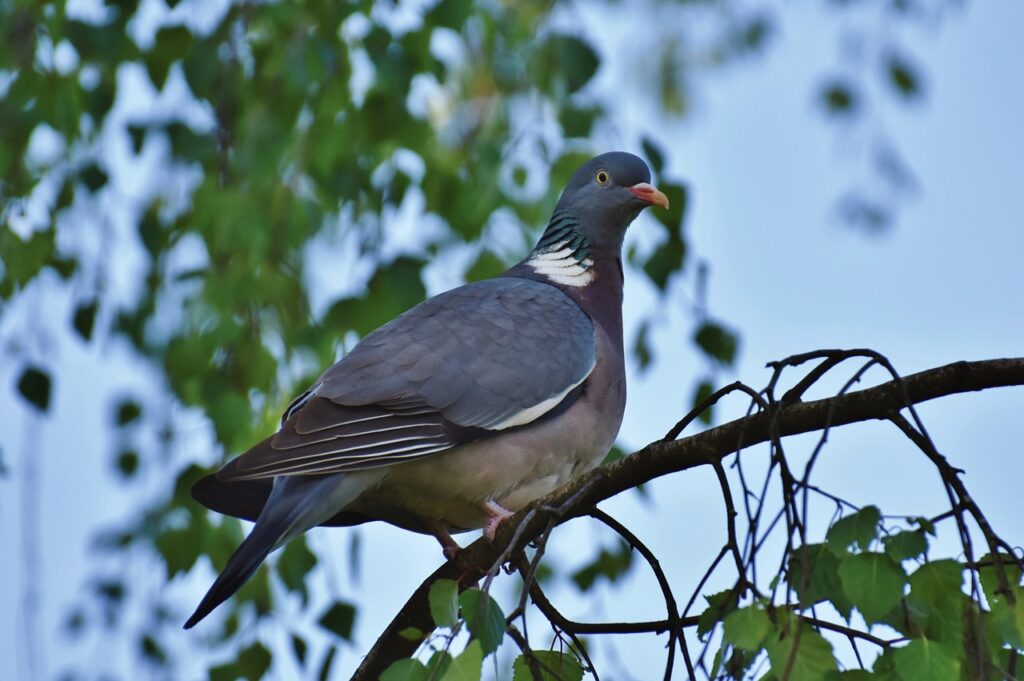
You’ll probably hear a Wood Pigeon before you see one. It is one of Britain’s largest pigeons, with a unique white neck patch and greyish-pink breast.
These birds are not fussy eaters; they consume seeds, grains, fruits, and occasionally garden vegetables. As their name suggests, they build simple nests in trees or large shrubs, often using sticks and leaves. They’re commonly seen waddling on lawns or flying in loose flocks over fields.
- Appearance: Grey body, white neck patch, pinkish breast.
- Scientific Name: Columba palumbus
- Song/Call: Soft, repetitive cooing.
- Personality/Behavior: Calm; often seen in pairs or small groups.
- Diet: Seeds, grains, fruits, and vegetables.
- Nesting Habits: Builds simple nests in trees or shrubs.
- Where to Spot Them: Commonly found in gardens, parks, and farmland.
6. Robin (Erithacus Rubecula)
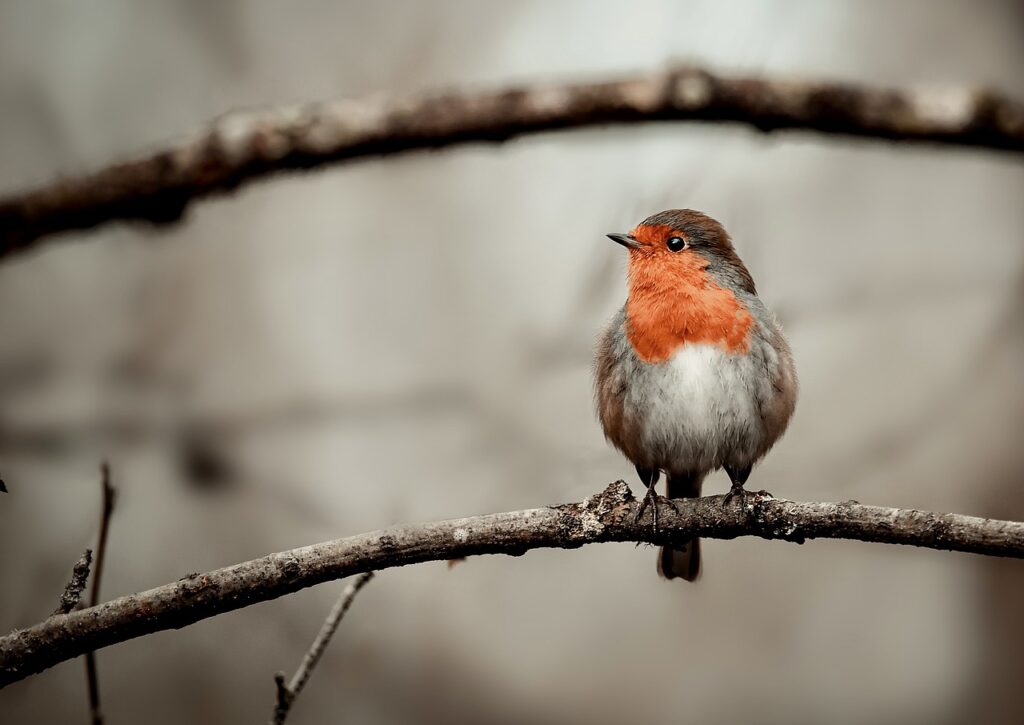
Then there is Robin, inarguably one of the most iconic garden birds in the UK. Small and round with a bright red breast, the Robin is a beloved bird often seen perched alone on fences or tree branches. Many call it the European Robin or Robin Redbreast, and that’s because of its bright red breast.
Apart from being an iconic garden bird and also one of the most common British birds, Robins are known for their friendly nature; they are quick to approach if they think you’re turning over soil or leaving out a mealworm or two. Well, this might make them look like opportunities, but I bet they are not. They are just “friendly.”
An average Robin hides its nests in sheltered spots like dense hedges, garden sheds, or banks. However, understand that Robins are highly territorial, especially during breeding season.
- Appearance: Brown upper parts with a red breast and face.
- Scientific Name: Erithacus rubecula
- Song/Call: Soft, melodious warbling.
- Personality/Behaviour: Bold and curious; often seen alone.
- Diet: Insects, worms, fruits.
- Nesting Habits: Nests in hedges, banks, or garden nooks.
- Where to Spot Them: Common in gardens, parks, and hedgerows.
7. Starling (Sturnus vulgaris)

Starlings have glossy black feathers that shimmer with purple and green under the sun. These birds are known for their noisy, chattering calls. Also, large flocks create swirling patterns in the sky, often mimicking sounds from their environment, including the calls of other birds. They nest in cavities like holes in trees or buildings and are commonly seen in urban areas, especially around roosting sites.
- Appearance: Glossy black with iridescent sheen and speckles.
- Scientific Name: Sturnus vulgaris
- Song/Call: Noisy chatter and mimicry.
- Personality/Behavior: Social, often seen in large flocks.
- Diet: Insects, fruits, and seeds.
- Nesting Habits: Nests in cavities in trees or buildings.
- Where to Spot Them: Urban areas, fields, and parks.
8. Great Tit (Parus major)
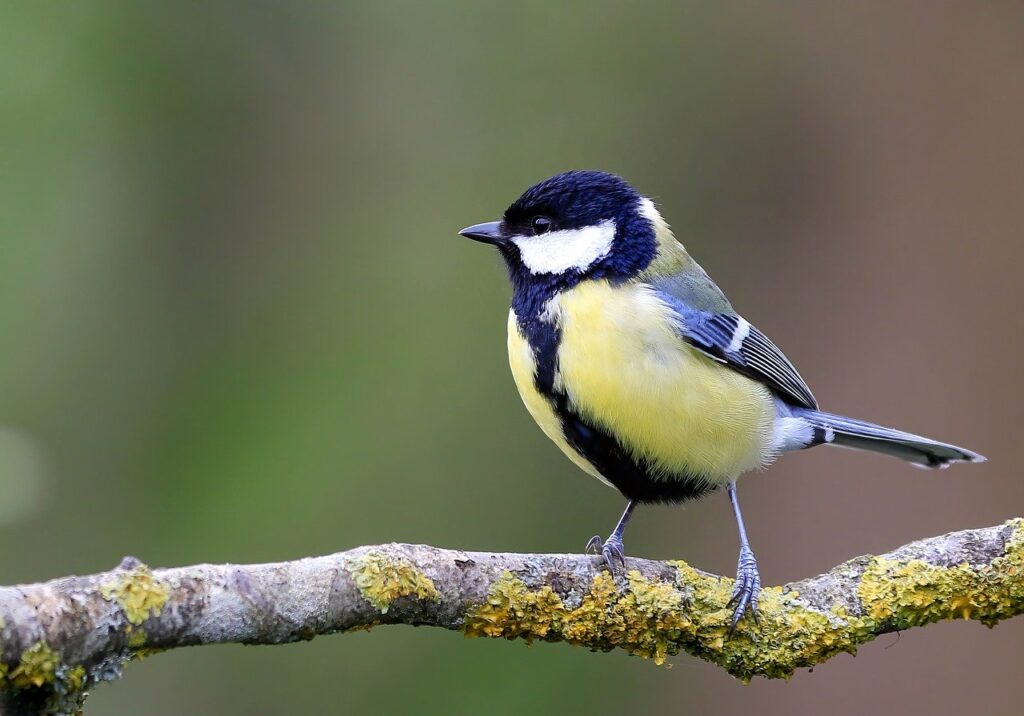
The Great Tit is the largest tit in the UK, easily recognised by its black head, white cheeks, and bright yellow belly with a black stripe. They have a varied and loud song that can be heard throughout woodlands and gardens. Great Tits are dominant at feeders, preferring sunflower seeds and suet, and they nest in holes in trees or bird boxes.
- Appearance: Black head, white cheeks, yellow belly with black stripe.
- Scientific Name: Parus major
- Song/Call: Loud and varied; “teacher-teacher” call.
- Personality/Behavior: Dominant and active at feeders.
- Diet: Insects, seeds, nuts.
- Nesting Habits: Prefers tree holes or nesting boxes.
- Where to Spot Them: Frequently seen in gardens, parks, and woodlands.
9. Magpie (Pica pica)
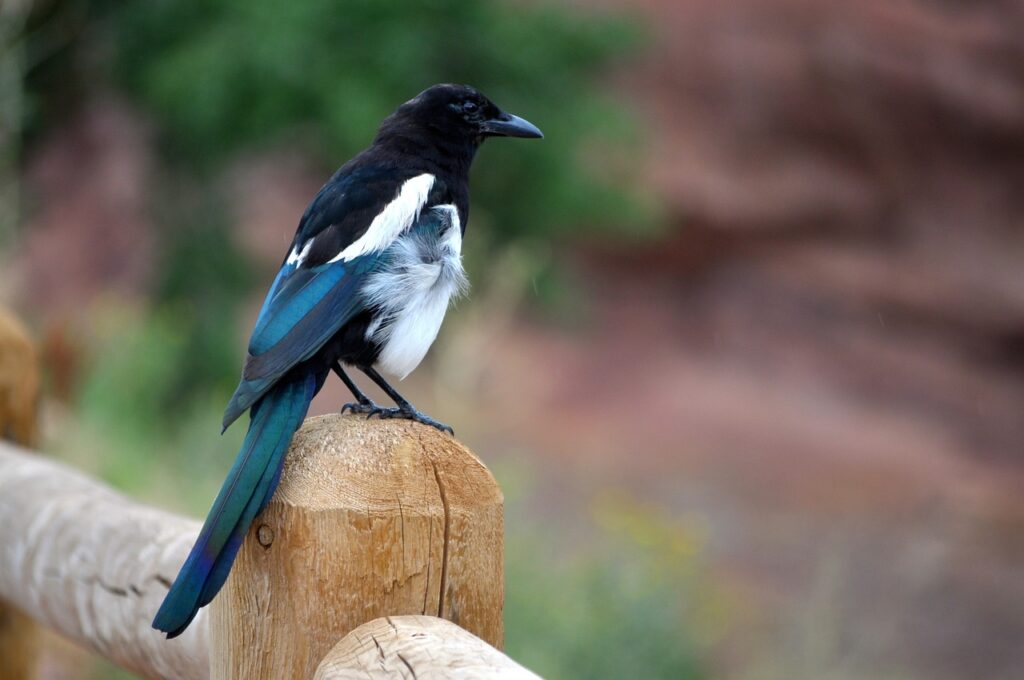
Magpies are large, black-and-white birds with long tails and a metallic sheen. Popular for their intelligence and bold behaviour, Magpies are often seen scavenging in gardens, parks, and fields.
They have a loud, chattering call, just like Starlings, and are known to be resourceful nest builders, using twigs to create large, dome-shaped nests high up in trees. These birds often get grouped with other black and white birds in the UK, but their unique look makes them unmistakable.
- Appearance: Black and white with a metallic sheen.
- Scientific Name: Pica pica
- Song/Call: Loud, chattering calls.
- Personality/Behavior: Intelligent and curious, often in pairs or small groups.
- Diet: Insects, small mammals, and carrion.
- Nesting Habits: Nests in tall trees with twig domes.
- Where to Spot Them: Gardens, farmland, and urban areas.
10. Goldfinch (Carduelis carduelis)
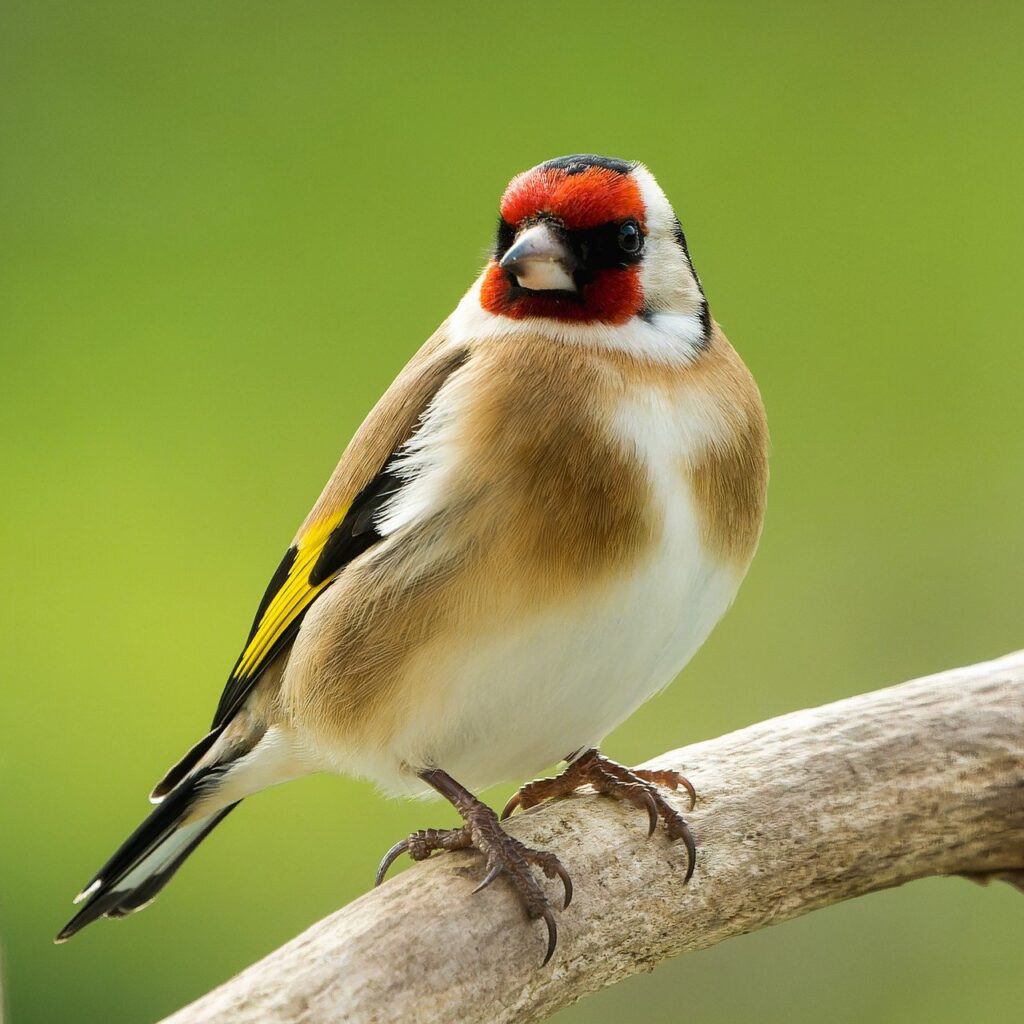
And lastly, we have the Goldfinches. They are small, colourful birds with bright red faces, black and white heads, and golden wing bars. They are often seen in loose flocks, chattering softly, light, tinkling songs while feeding on seeds from thistles, teasels, and dandelions.
Goldfinches prefer nesting in dense shrubs or trees, often where they can form small colonies. Their striking colours make them easy to spot despite having features similar to those of other popular yellow birds in the UK.
- Appearance: Red face, black and white head, golden wings.
- Scientific Name: Carduelis carduelis
- Song/Call: Soft, tinkling song.
- Personality/Behavior: Social; often seen in flocks.
- Diet: Seeds, especially thistles and teasels.
- Nesting Habits: Nests in shrubs or trees, often in loose colonies.
- Where to Spot Them: Commonly found in gardens, parks, and open countryside.
So, there you have it — some of the most common British birds you’ve probably seen at least once but couldn’t identify! Next time you’re out for a stroll or sipping a cuppa by the window, see how many you can now spot. You might be surprised at just how much more you notice now that you know what to look for. Happy birdwatching!
Frequently Asked Questions
How can I attract more birds to my garden?
To attract more birds, provide a mix of food like seeds, nuts, and suet, along with a birdbath for water. Planting native shrubs and trees can offer shelter and natural food sources, making your garden a welcoming spot for various species.
What should I feed British garden birds?
A good mix of seeds (like sunflower seeds), nuts, suet, mealworms, and fresh fruit is ideal for feeding British garden birds. Avoid bread, as it offers little to zero nutritional value.
Why do Starlings mimic other sounds?
Starlings are natural mimics and use this ability to communicate and establish territory.
What is Britain’s smallest bird?
The Goldcrest is Britain’s smallest bird, weighing around 5-6 grams.






